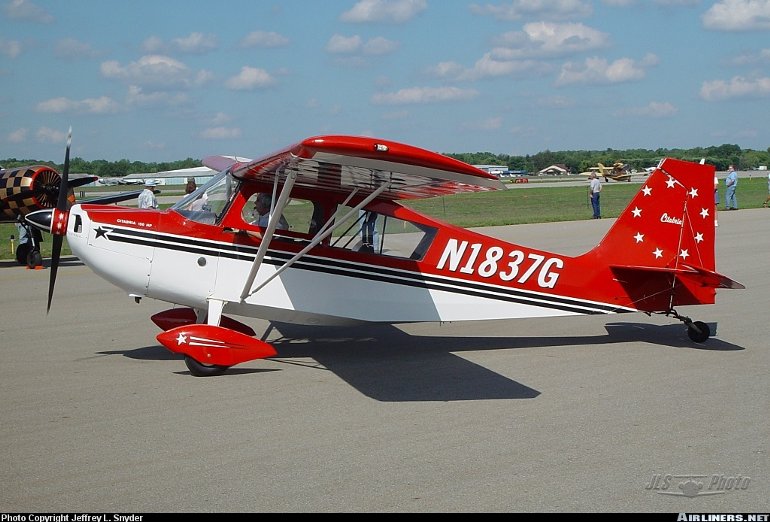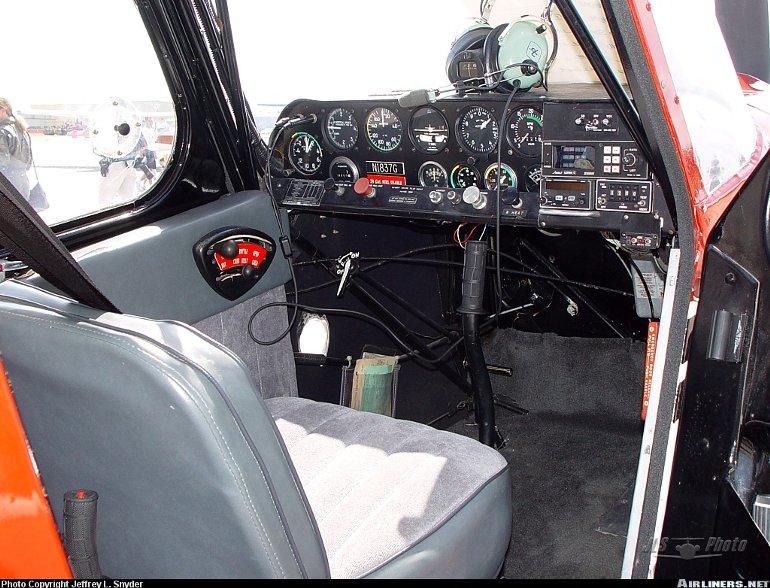Aircraft Technical Data
American Champion & Bellanca series


| Details | |
| Country of Origin | United States of America |
| Type | Series of two seat utility and aerobatic light aircraft |
| History | The Citabria, Bellanca and Scout can trace their lineage back to the Aeronca 7 Champion (described separately). Champion Aircraft Corporation purchased the production rights to the Aeronca 7 in 1951, and from this developed the 7EC Traveller and 7GCB Challenger. The Challengerbased Citabria first flew in May 1964 and incorporated a number of changes over the earlier models. These included more glass area, a squarer tail and stressing for limited (+5g, 2g) aerobatic flight, while other features were the flapless wing and choice of 75kW (100hp) Continental O200 or 80kW (108hp) Lycoming O235 engines. Variants on this theme were the 110kW (150hp) O320 powered 7GCAA and the 7GCBC with a longer span wing fitted with flaps. Bellanca took over production of the Citabria in September 1970, renaming the 7ECA, which by now was powered by an 85kW (115hp) O235, as the Citabria; the 7GCAA the Citabria 150 and the 7GCBC the Citabria 150S. Champion initially developed the 7KCAB model, but Bellanca took this over, resulting in the fully aerobatic 8KCAB Decathlon. The ultimate Decathlon design was the 135kW (180hp) AEIO360 powered Super Decathlon. The Scout was designed to perform a number of utility roles, and appeared in 1970. The updated 8GCBC followed in 1974 with a 135kW (180hp) O360. Bellanca production ended in 1982, while the Champion Aircraft Company produced the range in limited numbers between 198586. All three models are once again in low rate production, this time with American Champion. American Champion restarted production of the series in 1990, and now builds the baseline 7ECA Citabria Aurora (reintroduced in 1995), the 7GCBC Citabria Explorer, 8KCAB Super Decathlon and the 8GCBC Scout (and Scout CS with constant speed propeller). These aircraft are basically similar to their earlier namesakes, save for some minor equipment changes. |
| Powerplants | 7GCBC Explorer - One 120kW (160hp) Textron Lycoming O320B2B flat four driving a two blade fixed pitch Sensench propeller. 8GCBC - One 135kW (180hp) Lycoming O360C2A driving either a two blade fixed pitch or constant speed prop. |
| Performance | 7GCBC - Max speed 217km/h (117kt), cruising speed at 75% power 211km/h (114kt), at 65% power 198km/h (107kt). Max initial rate of climb 1345ft/min. Range at 55% power 965km (520nm). 8GCBC - Max speed 217km/h (162kt), cruising speed 209km/h (113kt). Initial rate of climb 1110ft/min. Range 725km (390nm). |
| Weights | 7GCBC - Empty 544kg (1200lb), max takeoff 816kg (1800lb). 8GCBC - Empty 595kg (1315lb), max takeoff 975kg (2150lb) |
| Dimensions | 7GCBC - Wing span 10.49m (34ft 5in), length 6.92m (22ft 9in), height 2.36m (7ft 9in). Wing area 16.5m2 (165sq ft). 8GCBC - Wing span 11.02m (36ft 2in), length 6.93m (22ft 9in), height 2.64m (8ft 8in). Wing area 16.7m2 (180sq ft). |
| Capacity | Two in tandem. Scout can be fitted for crop spraying. |
| Production | Over 6000 of all models built. Approx 70 deliv in 1998. |
| Related Links | American Champion & Bellanca series |
The backbone of this section is from the The International Directory of Civil Aircraft by Gerard Frawley and used with permission. To get your own copy of the book click here. |
|








